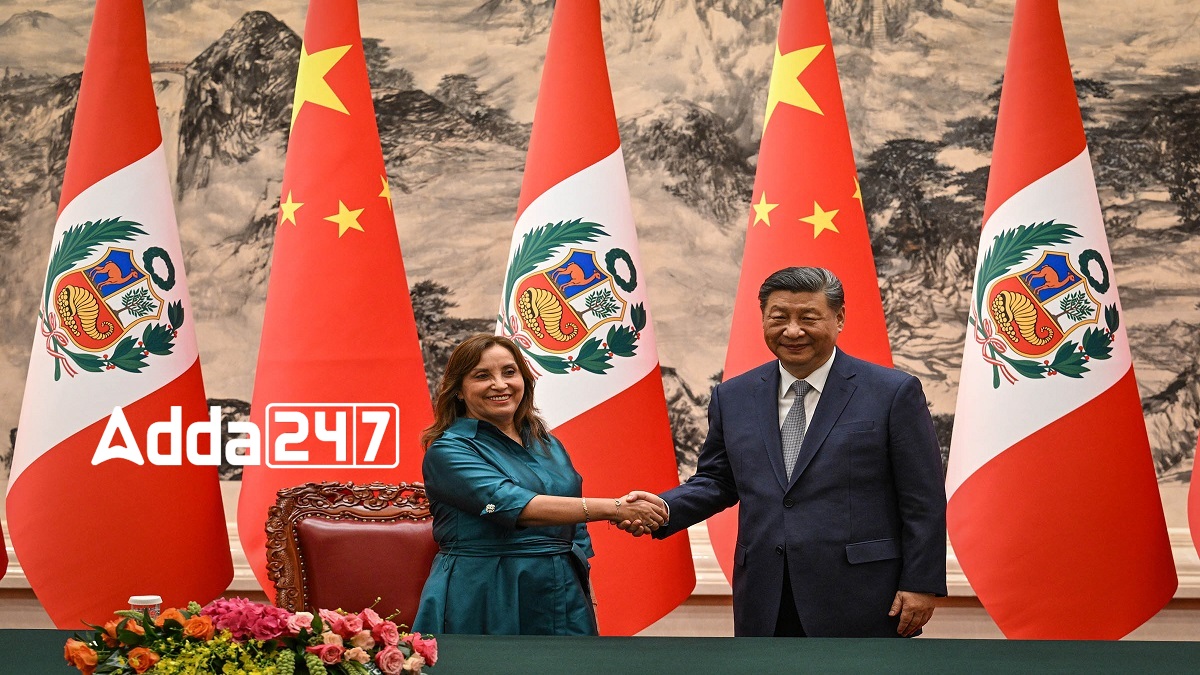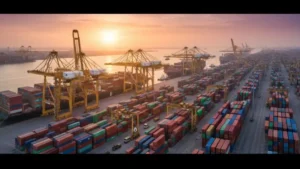China’s $1.3 billion megaport in Chancay, Peru, majority-owned by Chinese shipping giant Cosco, promises to connect South America to Asia and boost regional trade. However, locals in this coastal desert village, where many live without basic services, express dissatisfaction, claiming the port harms their livelihoods and brings no tangible benefits. While the government envisions significant economic growth, the residents of Chancay, particularly the fishermen, see the project as a threat to their resources and environment.
Port Project and Local Concerns
The Chancay megaport, which will feature 15 quays and attract over $3.5 billion in investment, aims to become a key transshipment hub for South American exports, such as Peru’s blueberries and Chile’s copper. Despite this, locals complain about the destruction of fishing grounds due to dredging, which deepened the shipping channel. Fishermen now face reduced catches and increased expenses, forcing them to travel farther to find fish. The community fears pollution and oil spills, recalling the 2022 spill at a nearby refinery.
Economic Promise vs. Social Realities
While President Xi Jinping highlighted the potential for job creation and economic benefits, many Chancay residents are skeptical. The dredging has affected fish breeding areas, and the port’s breakwater has altered currents, damaging surfing conditions and local tourism. Despite officials’ reassurances, the lack of local infrastructure, including clean water, sewage systems, and healthcare facilities, contrasts sharply with the modern port being developed.
Government and Corporate Response
Cosco and the Peruvian government recognize the stark contrast between the new port and the underdeveloped village. Cosco’s manager in Chancay, Mario de las Casas, acknowledged the inequality and mentioned studies aimed at integrating the port with local development. Yet, for many in Chancay, the port’s promise of prosperity remains distant, overshadowed by its immediate environmental and economic impacts.
Summery of the News
| Why in News | Key Points |
|---|---|
| China unveils Chancay megaport in Peru | Chancay megaport project, $1.3 billion investment, majority-owned by Chinese shipping giant Cosco. |
| Location | Chancay, Peru, on the coast of Peru’s desert region. |
| Key Figures | China’s President Xi Jinping, Peruvian President Dina Boluarte. |
| Port Details | 15 quays, 17-meter deep shipping channel, large industrial park. |
| Economic Impact | Expected to generate millions of dollars, turn coastal cities into special economic zones. |
| Local Impact | Fishermen report loss of fishing grounds, destruction of breeding areas, and reduced fish catches. |
| Environmental Concerns | Dredging affecting fish breeding grounds, possible pollution risks, and oil spills. |
| Local Demographics | Chancay population: 60,000, with 33% lacking running water. |
| Government’s View | Peruvian government promotes port as a strategic transshipment hub for regional exports. |
| Cosco’s Contribution | Cosco plans to reduce inequality and spur local growth by connecting port development with local infrastructure. |
| Important Exports from South America | Peru’s blueberries, Brazil’s soybeans, Chile’s copper. |



 Operation Hawkeye: US and Jordan Strike ...
Operation Hawkeye: US and Jordan Strike ...
 India and the Netherlands Set Up Joint T...
India and the Netherlands Set Up Joint T...
 Brazil Hands Over BRICS Presidency to In...
Brazil Hands Over BRICS Presidency to In...







